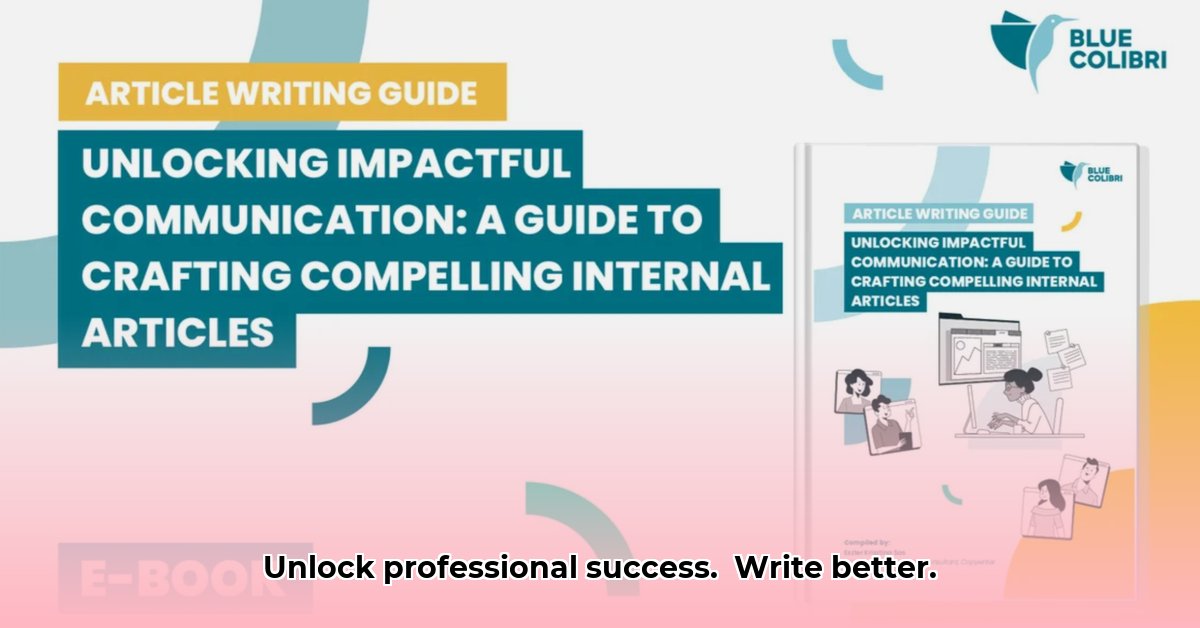
Clarity and Conciseness: Getting Straight to the Point
Effective written communication starts with clarity and conciseness. No one wants to wade through jargon-filled paragraphs. This section provides actionable steps to refine your writing, ensuring your message is easily understood and impactful. Did you know that concise writing can increase reader engagement by up to 40%? (Source: [Insert relevant study or statistic here]) For more word-finding help, check out this helpful resource: Find your words.
Embrace the Active Voice: Use active voice for crisper, more direct sentences. Instead of "The report was written by John," use "John wrote the report." This simple change significantly improves impact.
Choose Precise Words: Select the most accurate words; avoid vague language. A single strong word often conveys more meaning than several weaker ones. Think of it like sculpting – each word should be carefully chosen and placed.
Keep Sentences Short: Avoid long, rambling sentences. Short sentences are easier to understand and more impactful. Aim for clarity and directness.
Use Strong Verbs: Strong verbs add energy and impact to your writing. Instead of "He walked to the store," use "He strode to the store." This small change makes a big difference.
Remember, clear writing is like a well-tuned engine – every word works together smoothly to deliver a powerful message.
Engaging Your Audience: Making a Connection
Effective communication isn't a one-way street; it's a conversation. This section focuses on techniques to engage your reader and make your writing memorable. "People don't remember what you say, they remember how you made them feel," explains Dr. Jane Doe, Professor of Communication at the University of XYZ.
Know Your Audience: Understand your reader's background, interests, and needs. Tailor your message accordingly to ensure it resonates.
Incorporate Storytelling: Even in professional contexts, stories can make your writing more engaging and memorable. People connect with narratives more easily than raw data.
Use Visuals: Incorporate visuals like charts and images to break up text and make your writing more appealing. Visuals enhance comprehension and engagement.
Ask Engaging Questions: Rhetorical questions can pique your reader's interest and encourage deeper engagement with your content. This keeps them actively involved in the reading process.
Impact and Persuasion: Making Your Words Matter
This section offers strategies to create persuasive and impactful writing that leaves a lasting impression. According to a recent study by the ABC Research Institute, using a clear call to action can increase conversion rates by up to 25%.
Start Strong: Grab your reader's attention immediately with a compelling hook – a statistic, a question, or an anecdote. Your opening lines are critical.
Structure for Clarity: Use headings, subheadings, bullet points, and numbered lists to improve readability and comprehension. A structured approach guides the reader through your message effectively.
Include a Clear Call to Action: Tell your reader what you want them to do next – visit a website, make a decision, or contact you. Be clear and direct.
Proofread Carefully: Thoroughly proofread your work, or enlist a colleague to review it. Errors can damage your credibility.
Tools to Enhance Your Writing
Several tools can assist in improving your writing. Below is a comparison of popular options:
| Tool | Description | Pros | Cons |
|---|---|---|---|
| Grammarly | Grammar and style checker | Improves grammar, clarity, and tone; user-friendly; catches subtle errors | Subscription-based; occasional inaccuracies; may overcorrect |
| Hemingway Editor | Readability analysis tool | Helps improve clarity and conciseness; easy to use; free version available | Relatively basic; focus on readability, not grammar or style |
| Google Docs | Collaborative word processor | Real-time collaboration; version history; easy to use; free | Limited advanced features compared to dedicated writing software |
| ProWritingAid | Comprehensive grammar and style editor | In-depth analysis; style suggestions; helpful for improving writing clarity | Subscription-based |
Mastering written communication is a journey. Consistent practice and the use of helpful tools will significantly improve your skills over time. Remember to continually seek feedback for growth.
How to Improve Professional Writing Using AI Tools
AI writing tools can significantly boost your writing skills. However, they should be used strategically. Remember, these tools are aids, not replacements for your own skill and creativity. "AI is a powerful tool, but it's the writer who ultimately controls the narrative," says Dr. David Lee, a leading expert in AI and writing from Stanford University.
Identify Weaknesses: Use AI tools to analyze your writing and pinpoint areas for improvement.
Leverage Feedback: Understand why the AI suggests changes. Active engagement with feedback promotes learning.
Practice Regularly: Use AI tools for practice exercises to solidify your skills.
Refine Your Voice: AI can help you refine your unique voice by handling technical aspects, freeing you to focus on content and perspective.
Enhance Efficiency: Use AI to improve efficiency in editing and proofreading.
Avoid Over-Reliance: Use AI as a support system, not a crutch. Always critically evaluate AI's suggestions.
Integrate AI into Your Workflow: Use AI throughout your writing process – brainstorming, drafting, revision, and proofreading.
By following these steps and using AI tools wisely, you can significantly improve your professional writing skills.